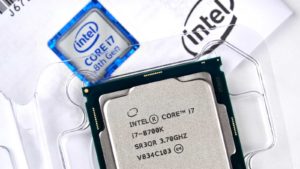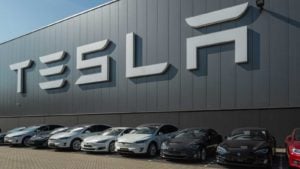If we broadly classify stocks, we end up with two major categories. The first is growth stocks. Typically, these are stocks to buy from companies with robust revenue and earnings growth. Most of these companies have high capital expenditures. As a result, growth stocks are generally not known for robust free cash flows (FCF).
On the other hand, there are companies with mature business and stable cash flows. Even with investments in innovation or sustainable growth, these companies deliver robust FCF.
In general, companies with strong cash flows have a healthy balance sheet. They typically offer attractive dividends and value creation through share repurchases. Additionally, companies with a healthy FCF are low-beta stocks.
For a diversified portfolio, it’s important to have a mix of growth stocks and shares from mature businesses. Growth stocks provide investors with significant upside potential, while companies with solid FCF offer more opportunities for steady income.
With that in mind, let’s discuss these seven stocks to buy with strong free cash flows:
- Apple (NASDAQ:AAPL)
- Target Corporation (NYSE:TGT)
- Alphabet (NASDAQ:GOOG, NASDAQ:GOOGL)
- Nvidia (NASDAQ:NVDA)
- Pfizer (NYSE:PFE)
- Intel (NASDAQ:INTC)
- Tesla (NASDAQ:TSLA)
Stocks to Buy: Apple (AAPL)

Recently, Apple reported results for the fourth quarter of 2021. The company saw operating cash flow (OCF) of $104 billion for the financial year. Further, free cash flow was $92.95 billion. Clearly, AAPL stock is among the top stocks to buy for their free cash flow.
It’s worth noting that as of September, the company reported $35 billion in cash and equivalents. Considering the cash flow, it’s likely that the cash buffer will swell further. This provides Apple with ample financial flexibility to invest in innovation-driven organic growth and acquisitions.
At the same time, Apple is likely to be among the list of top dividend growth stocks. The company has already been pursuing aggressive share repurchases.
From a business perspective, iPhone sales remain a key revenue driver. However, Apple has witnessed healthy revenue growth from the services and wearables segment. Further diversification can help create emerging cash cows.
Overall, AAPL stock looks attractive from a dividend and growth perspective. At a forward price-to-earnings (P/E) ratio of 26.5x, the stock looks poised for further upside.
Target Corporation (TGT)

TGT stock has been on an uptrend with year-to-date (YTD) returns of 44% in 2021. The upside is backed by positive fundamental developments and cash flow upside.
Target has consistently reported healthy growth in comparable store sales. For Q2 2021, comparable store sales increased by 8.9%. It’s also worth noting that in Q2 2020, digital comparable sales growth was 195%. This was further backed by 10% growth in the most recent quarter.
With Target building strong omni-channel presence, the outlook seems bright in terms of sustained sales growth.
It’s worth noting the company has planned to invest $4 billion annually over the next few years to fund new store openings and remodeling efforts. Additionally, Target wants to enhance its fulfillment services and build a robust supply chain.
Coming to cash flows, Target reported operating cash flow of $3.4 billion for the first half of 2021. For the same period, free cash flow was $2.1 billion. This would imply an annualized free cash flow potential of over $4 billion. With investments likely to drive growth, Target is well positioned for FCF in excess of $5 billion.
Recently, the company announced a new share repurchase program of $15 billion. Additionally, Target has a healthy dividend yield of 1.42%.
Stocks to Buy: Alphabet (GOOG, GOOGL)

GOOG stock has been surging and currently trades near its 52-week highs. However, even after a big rally, the stock trades at a forward P/E ratio of 27.6x. Considering the growth and cash flow potential, GOOG stock is worth accumulating on small corrections.
For Q3 2021, Alphabet reported revenue of $65.1 billion. On a year-over-year (YOY) basis, revenue growth was 41%.
An important point to note is that Google services bring in a large portion of revenue. However, in the coming years, Google Cloud is likely to contribute more to growth and cash flows.
For Q3 2021, Google Cloud revenue was $5 billion. This already implies an annualized revenue of $20 billion. However, the segment reported an operating loss of $644 million for the quarter. Once the business scales up further, its EBITDA margin is likely to be robust.
Coming to cash flows, Alphabet reported operating cash flow of $25.5 billion for Q3 2021. For the same period, the company’s free cash flow was $18.7 billion. It therefore has an annual FCF potential of nearly $75 billion.
Considering its top-line growth and potential improvement of its margin in the cloud business, Alphabet’s FCF is likely to increase in the coming years. GOOG stock is therefore one of the top stocks to buy based on its free cash flow.
Nvidia (NVDA)

Recently, NVDA stock has been a top value creator. In the last six months, the stock has surged by 118%. With strong growth and upside in cash flows, it seems the positive momentum will sustain for Nvidia.
For Q2 2022, Nvidia reported total revenue of $6.5 billion. On a YOY basis, revenue growth was 68%. This growth was primarily driven by its gaming division, but its data center and professional visualization segments are catching up quickly.
With a strong focus on investment in innovation, Nvidia is likely to remain a value creator. Accelerated cash flow is one of the key factors for NVDA stock trending higher. The company reported free cash flow of $1.5 billion in 2017. For the last financial year, its FCF reached $4.7 billion.
Furthermore, for the first half of 2021, Nvidia reported $4.6 billion in operating cash flows and $4.1 billion in FCF. Clearly, free cash flow has been increasing at a robust pace.
It’s worth noting Nvidia has a presence in emerging segments like autonomous vehicles and artificial intelligence (AI). This will ensure top-line growth remains robust and position Nvidia for sustained value creation in the coming years.
Stocks to Buy: Pfizer (PFE)

At a forward P/E ratio of 11.35x, PFE stock looks like an interesting bet. Additionally, the stock offers a healthy dividend yield of 3.3%.
It’s worth noting that Covid-19 vaccine sales have been a game-changer for Pfizer in terms of cash flows. For the first half of 2020, Pfizer reported operating cash flow of $6.7 billion. For the current-year comparable period, OCF was $15.8 billion. This positions Pfizer for OCF in excess of $30 billion for the current year.
I believe strong cash flows are likely to continue in 2022. The first reason is that Pfizer already has revenue visibility of $29 billion from vaccine sales in 2022.
The company continues to engage with governments for new Covid-19 vaccine contracts. Additionally, Pfizer received approval from the U.S. Food and Drug Administration (FDA) for emergency use of vaccines in kids aged five to 11 years. This is likely to have an incremental impact on cash flows.
Pfizer also has a deep pipeline of candidates in Phase 2 and Phase 3. The cash flows from vaccine sales will allow it to expand and accelerate this pipeline. At the same time, dividend growth seems likely.
Pfizer also has ample financial flexibility to pursue inorganic growth. Recently, the company announced the acquisition of Trillium Therapeutics (NASDAQ:TRIL) for a consideration of $2.26 billion. This acquisition will help the company diversify its oncology portfolio.
Intel (INTC)

INTC stock trades at a forward P/E ratio of 14.06x and has a dividend yield of 2.74%. For 2021, Intel has guided for free cash flow of $12.5 billion. Clearly, the stock is worth considering.
In terms of growth, Intel has committed to investing $20 billion in two state-of-the-art semiconductor production plants in Arizona. This should boost its position in the chip manufacturing segment.
Further, Intel has seen growth in its Internet of Things business. For the first nine months of 2021, the segment saw revenue growth of 38.6% to nearly $4 billion. With significant investments in research and development, growth is likely to sustain in its emerging businesses.
Another important point to note is that Intel has guided for capital expenditures of $18 billion to $19 billion for 2021. For the coming year, this figure will likely be in the range of $25 to $28 billion.
Intel is in an aggressive period of investment. For long-term buyers, the results will show in the form of top-line growth and cash flow upside.
Stocks to Buy: Tesla (TSLA)

TSLA stock has been surging, and it makes sense to wait for some correction. However, the stock is worth holding, as free cash flows are likely to swell in the coming years.
Loup Ventures analyst Gene Munster believe Tesla can be a $2.5 trillion market capitalization company. Munster further opines that Tesla’s sales can increase from $70 billion to more than $400 billion in the next five years.
For the most recent quarter, Tesla reported $1.3 billion in free cash flow. This already implies an annualized FCF of $5.2 billion. As a ballpark estimate, five-fold growth in revenue can translate into similar growth in FCF. Therefore, over the next five years, Tesla has FCF visibility of $25 billion.
It’s worth noting that electric vehicle (EV) adoption is still in its early stages. Therefore, the projection of $400 billion in revenue in the next five years is not unrealistic. Tesla already has giga-factories in all major markets. As its sales volume grows, key margins will continue to expand.
Overall, Tesla’s valuations might be looking stretched, but the company is an innovator and early mover in the EV industry. Strong growth in cash flows will ensure TSLA stock remains on an uptrend.
On the date of publication, Faisal Humayun did not have (either directly or indirectly) any positions in any of the securities mentioned in this article. The opinions expressed in this article are those of the writer, subject to the InvestorPlace.com Publishing Guidelines.
Faisal Humayun is a senior research analyst with 12 years of industry experience in the field of credit research, equity research and financial modelling. Faisal has authored over 1,500 stock specific articles with focus on the technology, energy and commodities sector.
